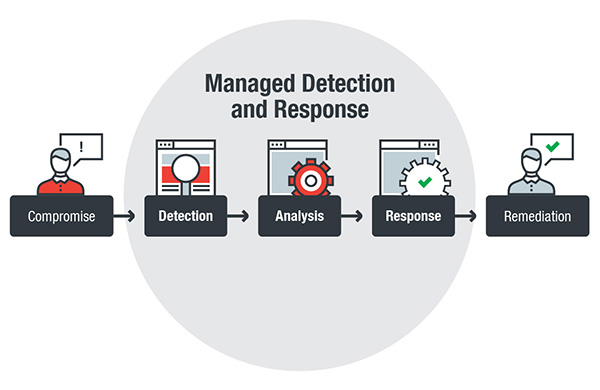
Managed Detection and Response (MDR)
In today's complex cybersecurity landscape, organizations face an unprecedented number of threats. To combat these threats, Managed Detection and Response (MDR) has emerged as a vital component of any robust cybersecurity strategy. MDR is a cybersecurity service that helps organizations detect and respond to cyber threats in real-time, leveraging a combination of technology and human expertise. In this blog post, we will delve into the world of MDR, exploring its benefits, core capabilities, and how it differs from traditional Managed Security Service Providers (MSSP).
The Evolution of Cybersecurity
The cybersecurity landscape has evolved significantly over the past decade. Traditional security measures, such as firewalls and antivirus software, are no longer sufficient to protect against modern threats. The rise of advanced persistent threats (APTs), zero-day exploits, and nation-state attacks has created a new era of cybersecurity. Organizations require a more proactive approach to detecting and responding to threats, which is where MDR comes into play.Core Capabilities of MDR
MDR services offer a range of core capabilities that enable organizations to detect and respond to threats in real-time. These capabilities include risk management, security incident prioritization, threat hunting, investigation, guided response, and managed remediation. MDR providers use a combination of automated tools and human expertise to deliver these capabilities, ensuring that organizations receive comprehensive protection against cyber threats.Benefits of MDR
The benefits of MDR are numerous. Firstly, MDR enables organizations to detect and respond to threats in real-time, reducing the risk of data breaches and cyber attacks. Secondly, MDR provides organizations with access to advanced security expertise and technologies, without the need for significant investment. Finally, MDR helps organizations improve their security posture and resiliency, enabling them to stay ahead of emerging threats.MDR vs. Traditional MSSP
MDR differs significantly from traditional MSSP. While MSSP provides basic security monitoring and management, MDR offers advanced threat detection and response capabilities. MDR providers use next-generation technologies, such as AI and machine learning, to detect and respond to threats, whereas MSSP relies on traditional security measures. Additionally, MDR providers offer proactive threat hunting and incident response capabilities, which are not typically offered by MSSP.

In conclusion, MDR is a vital component of any robust cybersecurity strategy. Its core capabilities and benefits make it an essential tool for organizations seeking to detect and respond to cyber threats in real-time. As the cybersecurity landscape continues to evolve, MDR will play an increasingly important role in protecting organizations from emerging threats. If you're considering MDR for your organization, make sure to choose a provider that offers advanced security expertise, next-generation technologies, and proactive threat hunting and incident response capabilities.
SMIIT







.jpg)
